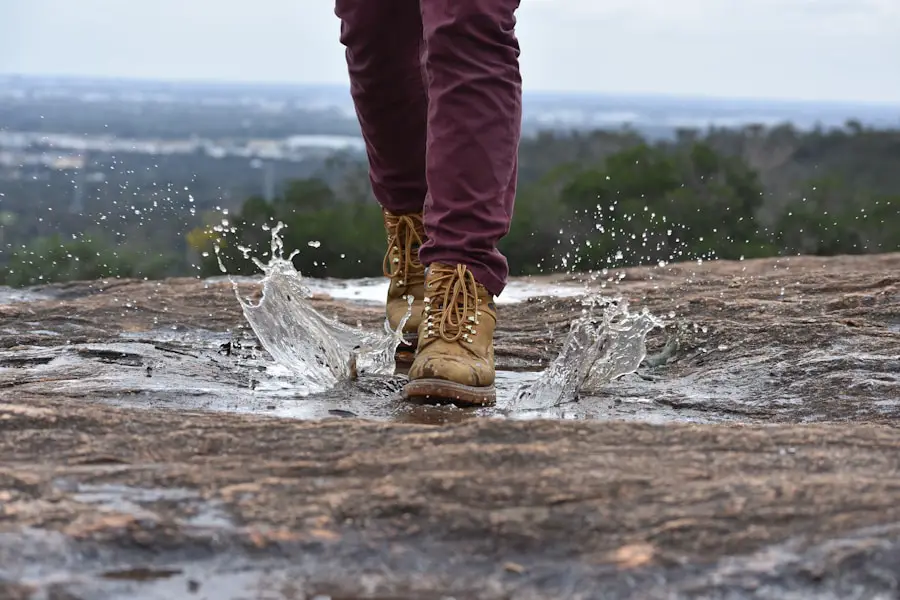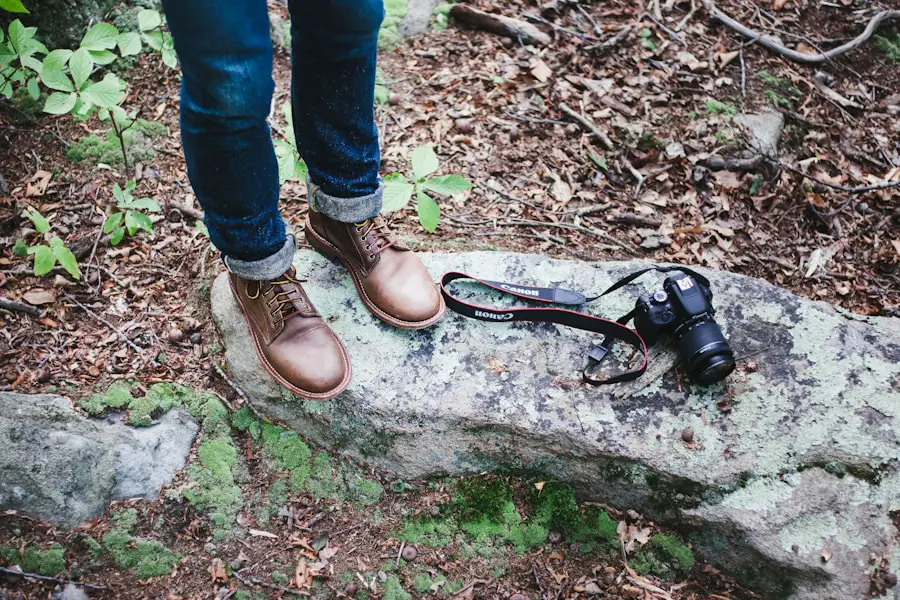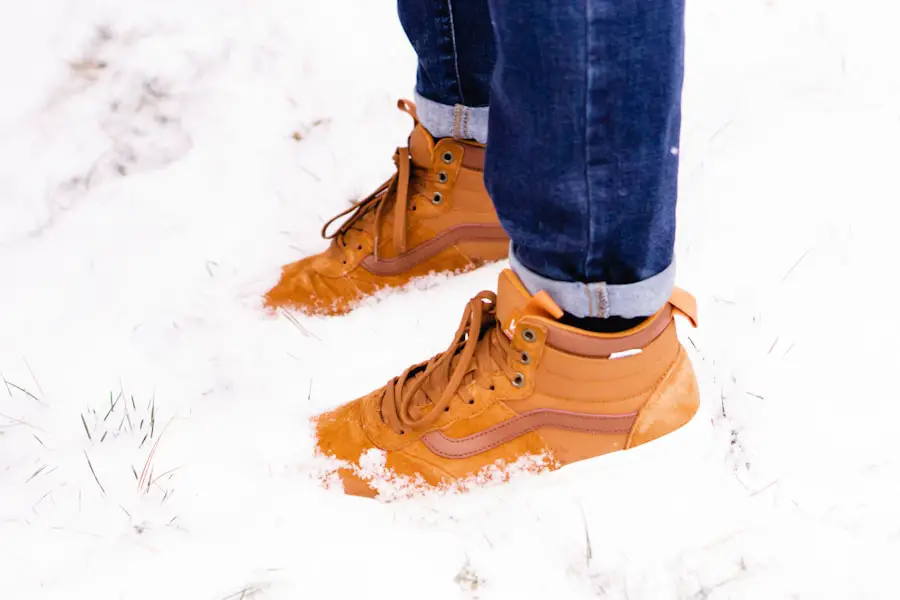Timberland boots have become synonymous with rugged outdoor footwear, known for their distinctive style and robust construction. Originally designed for the working class, particularly in the logging industry, Timberland boots have evolved into a fashion statement while retaining their functional roots. The brand was founded in 1952 by Nathan Swartz, who aimed to create a waterproof boot that could withstand the harsh conditions of New England’s winters.
Over the decades, Timberland has expanded its offerings, but the classic yellow boot remains a staple in both urban and outdoor settings. The appeal of Timberland boots extends beyond their aesthetic; they are engineered for performance and durability. This combination of style and functionality has made them a popular choice among outdoor enthusiasts, urban dwellers, and fashion-forward individuals alike.
As hiking gains popularity as a recreational activity, many people are curious about whether Timberland boots can hold their own on the trails. This article delves into the various features that make Timberlands suitable for hiking, examining their durability, support, traction, comfort, waterproofing, weight, and flexibility.
Key Takeaways
- Timberland boots are a popular choice for hiking due to their durability and support.
- Features of Timberlands for hiking include traction, grip, waterproofing, and weather resistance.
- Timberlands offer excellent durability and support for long hikes, making them a reliable choice for outdoor enthusiasts.
- The traction and grip of Timberland boots make them suitable for different terrains, providing stability and confidence while hiking.
- Comfort and fit are important factors for long hikes, and Timberland boots are designed to provide both, ensuring a comfortable experience for hikers.
Features of Timberlands for hiking
Durable and Breathable Construction
The construction of Timberland boots typically includes premium leather uppers that provide both durability and a degree of breathability. The leather is often treated to enhance its resistance to water and abrasions, making it suitable for various hiking conditions.
Comfort and Debris Prevention
Many models incorporate a padded collar and tongue, which not only adds to the overall comfort but also helps to prevent debris from entering the boot during hikes.
Advanced Cushioning and Anti-Fatigue Technology
Another significant feature is the use of advanced cushioning technologies in the midsole. Timberland employs materials like EVA (ethylene-vinyl acetate) to provide shock absorption and support during long treks. This cushioning is essential for reducing fatigue on uneven terrain and helps to protect the feet from impact. Furthermore, some models include anti-fatigue technology that is specifically designed to provide all-day comfort, making them ideal for extended hikes where foot fatigue can be a concern.
Durability and support for hiking

Durability is a hallmark of Timberland boots, making them a reliable choice for hikers who traverse rugged landscapes. The brand’s commitment to quality craftsmanship ensures that each pair is built to withstand the rigors of outdoor adventures. The use of high-quality leather not only enhances the boot’s lifespan but also allows it to develop a unique patina over time, adding character while maintaining functionality.
Reinforced stitching and robust hardware further contribute to the overall durability, ensuring that these boots can endure rough conditions without compromising performance. Support is another critical factor when considering footwear for hiking. Timberland boots are designed with features that promote stability and ankle support, which are vital when navigating uneven or rocky terrain.
Many models come with a higher cut that provides additional ankle coverage, reducing the risk of sprains or injuries during challenging hikes. The combination of a supportive structure and cushioning technology allows hikers to maintain proper alignment and balance, which is essential for preventing discomfort and injuries over long distances.
Traction and grip on different terrains
| Terrain | Traction | Grip |
|---|---|---|
| Asphalt | High | Strong |
| Gravel | Medium | Fair |
| Mud | Low | Weak |
| Snow | Medium | Fair |
| Sand | Low | Weak |
When hiking, traction is paramount for safety and performance. Timberland boots are equipped with outsoles made from rubber compounds that are engineered to provide excellent grip on various surfaces. The lug patterns on the outsoles are strategically designed to enhance traction on both wet and dry terrains, allowing hikers to confidently navigate through mud, rocks, and slippery surfaces.
This feature is particularly important in unpredictable weather conditions where footing can become treacherous. In addition to their grip on natural surfaces, Timberland boots also perform well on urban terrains, making them versatile for those who transition from trails to city streets. The combination of rugged outsoles and durable materials ensures that hikers can rely on their Timberlands whether they are scaling a mountain or walking through a rain-soaked park.
This adaptability makes Timberland boots an appealing option for individuals who enjoy both outdoor adventures and urban exploration.
Comfort and fit for long hikes
Comfort is a crucial consideration for any hiking footwear, especially during long excursions where foot fatigue can significantly impact the experience. Timberland boots are designed with an emphasis on fit and comfort, featuring various widths and sizes to accommodate different foot shapes. The inclusion of padded collars and cushioned insoles enhances the overall comfort level, allowing hikers to wear them for extended periods without discomfort.
Moreover, many Timberland models incorporate technologies aimed at improving fit and reducing pressure points. For instance, some boots feature removable insoles that allow hikers to customize their footwear with orthotic inserts if needed. This adaptability ensures that individuals can achieve a personalized fit that caters to their specific foot needs, further enhancing comfort during long hikes.
The combination of these features makes Timberland boots a reliable choice for those who prioritize comfort on the trails.
Waterproofing and weather resistance

One of the standout features of many Timberland boots is their waterproofing capabilities. The brand utilizes various technologies to ensure that their footwear remains dry in wet conditions. For instance, some models incorporate Gore-Tex linings that provide a breathable yet waterproof barrier, keeping feet dry even in heavy rain or when traversing through streams.
This feature is particularly beneficial for hikers who often find themselves in unpredictable weather or wet environments. In addition to waterproofing, Timberland boots are designed with weather resistance in mind. The leather used in many models is treated with water-repellent coatings that help prevent moisture from penetrating the material.
This treatment not only enhances the boot’s performance in wet conditions but also contributes to its overall durability by protecting against salt stains and other environmental factors that can degrade footwear over time.
Weight and flexibility for hiking
The weight of hiking boots can significantly impact a hiker’s performance and endurance on the trails. Timberland has made strides in creating lightweight options without sacrificing durability or support. Many models utilize lightweight materials in their construction while still providing the necessary protection against rough terrain.
This focus on reducing weight allows hikers to move more freely and efficiently, which is especially important during long hikes where every ounce counts. Flexibility is another important aspect of hiking footwear that affects overall comfort and performance. Timberland boots are designed to offer a balance between rigidity for support and flexibility for natural movement.
This design allows hikers to navigate varied terrains without feeling restricted by their footwear. The combination of lightweight materials and flexible construction enables hikers to maintain agility while ensuring that their feet remain protected from sharp rocks or uneven surfaces.
Are Timberlands suitable for hiking?
Timberland boots present a compelling option for hikers seeking reliable footwear that combines style with functionality. Their durable construction, supportive design, excellent traction, comfort features, waterproofing capabilities, lightweight nature, and flexibility make them well-suited for various hiking conditions. While they may not be specialized technical hiking boots like some brands specifically designed for extreme conditions or high-altitude trekking, they offer a versatile solution for casual hikers and those who enjoy outdoor activities in diverse environments.
Ultimately, whether Timberlands are suitable for hiking depends on individual preferences and specific hiking needs. For those who prioritize style alongside performance or who engage in moderate hiking activities, Timberlands can be an excellent choice. However, serious hikers tackling challenging terrains or embarking on multi-day treks may want to consider specialized options tailored specifically for those demands.
Regardless of the choice made, Timberland boots stand as a testament to quality craftsmanship and enduring style in the world of outdoor footwear.
If you’re looking for the perfect footwear for your next hiking adventure, consider investing in a pair of Timberlands. These sturdy and durable boots are not only stylish but also provide excellent support and traction on various terrains. According to a recent article on TakeTravelInfo, Timberlands are a popular choice among hikers for their comfort and reliability. So lace up your Timberlands and hit the trails with confidence!
Love travel? Join Our Facebook Community
FAQs
Are Timberlands good for hiking?
Yes, Timberland hiking boots are known for their durability, support, and traction, making them a popular choice for hikers.
What features make Timberland boots good for hiking?
Timberland hiking boots typically feature waterproof materials, cushioned footbeds, rugged outsoles for traction, and ankle support for stability on uneven terrain.
Are Timberland boots suitable for long hikes?
Yes, Timberland boots are designed to provide comfort and support for long hikes, with features such as cushioning and arch support to reduce fatigue.
Do Timberland boots require a break-in period for hiking?
While some hikers may find that Timberland boots require a short break-in period, many users report that they are comfortable right out of the box for hiking.
Can Timberland boots handle rough terrain?
Yes, Timberland hiking boots are designed to handle rough terrain, with features such as durable construction, protective toe caps, and aggressive outsoles for traction on various surfaces.
Are Timberland boots waterproof for hiking?
Many Timberland hiking boots are made with waterproof materials such as Gore-Tex or TimberDry membranes, making them suitable for hiking in wet conditions.
